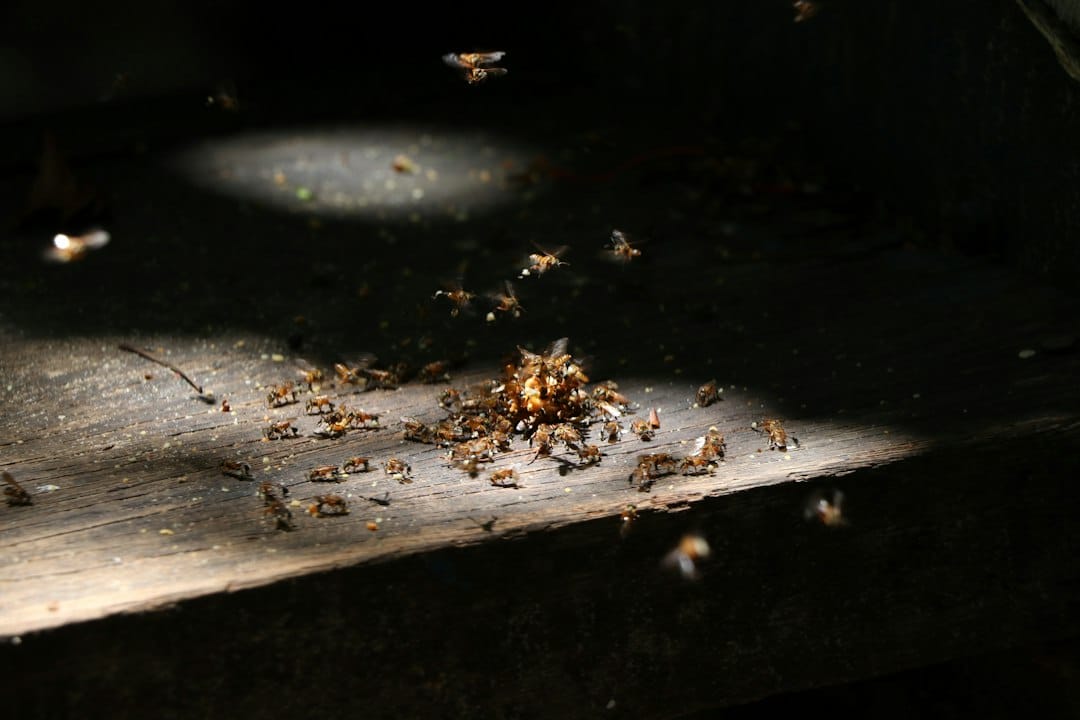Last Updated on February 14, 2024 by Arizona Termite Control
Termite infestations can cause significant damage to homes and structures, leading to costly repairs and potential safety hazards. Therefore, it is crucial for homeowners to take proactive steps to prevent termites from infesting their properties. By understanding the threat that termites pose and implementing preventative measures, homeowners can protect their homes and ensure long-term termite prevention.
Contents
- 1 Understanding the Threat: What Are Termites and How Do They Infest Homes?
- 2 Signs of Termite Infestation: How to Identify Early Warning Signs in Your Home
- 3 Prevention is Key: Proactive Steps to Protect Your Home from Termites
- 4 Landscaping and Yard Maintenance: How to Minimize Termite Attraction
- 5 Moisture Control: Keeping Your Home Dry and Uninviting to Termites
- 6 Wood Treatment and Protection: Using Chemicals and Barriers to Deter Termites
- 7 Structural Repairs and Maintenance: Fixing Vulnerabilities in Your Home’s Foundation
- 8 Professional Inspection and Treatment: When to Call in the Experts
- 9 DIY Termite Control: Tips and Tricks for Homeowners
- 10 Long-Term Termite Prevention: Maintaining a Termite-Free Home for Years to Come
- 11 Protecting Your Home from Termites
Key Takeaways
- Termites are small insects that feed on wood and can cause significant damage to homes.
- Signs of termite infestation include mud tubes, discarded wings, and hollow-sounding wood.
- Prevention measures include regular inspections, sealing cracks and crevices, and removing wood debris from around the home.
- Landscaping and yard maintenance can also help minimize termite attraction by keeping plants and mulch away from the foundation.
- Moisture control is crucial in deterring termites, as they are attracted to damp environments.
Understanding the Threat: What Are Termites and How Do They Infest Homes?
A. Types of Termites
There are three main types of termites that commonly infest homes: subterranean termites, drywood termites, and dampwood termites. Subterranean termites are the most common and destructive type, as they build their colonies underground and create mud tubes to access above-ground food sources. Drywood termites, on the other hand, infest dry wood and do not require contact with soil. Dampwood termites are attracted to moist wood and are typically found in areas with high humidity levels.
B. Termite Behavior and Habits
Termites are social insects that live in large colonies consisting of different castes, including workers, soldiers, and reproductive individuals. Workers are responsible for feeding the colony, while soldiers defend it against predators. Reproductive individuals are responsible for mating and establishing new colonies. Termites feed on cellulose-based materials such as wood, paper, and plant debris.
C. How Termites Infest Homes
Termites can enter homes through cracks in foundations, gaps around utility lines, or even through tiny openings in concrete slabs. Once inside a home, they can cause significant damage by feeding on wooden structures such as beams, joists, and furniture. Termites can also build mud tubes along walls or foundations to access above-ground food sources.
Signs of Termite Infestation: How to Identify Early Warning Signs in Your Home
A. Visible Damage to Wood and Structures
One of the most obvious signs of a termite infestation is visible damage to wooden structures. This can include hollowed-out wood, blistering or peeling paint, or sagging floors. Termites eat wood from the inside out, so the damage may not be immediately apparent. It is important to regularly inspect wooden structures for any signs of damage.
B. Mud Tubes and Termite Droppings
Mud tubes are another telltale sign of a termite infestation. These tubes are made by termites to provide them with moisture and protection as they travel between their colony and food sources. They are typically found along walls, foundations, or in crawl spaces. Additionally, termite droppings, also known as frass, may be found near infested areas. These droppings resemble small pellets or sawdust and can indicate an active termite infestation.
C. Swarming Termites
Swarming termites are reproductive individuals that leave their colonies in search of new mates and locations to establish new colonies. Swarms usually occur in the spring or early summer and can be a sign of an established termite colony nearby. Swarming termites are attracted to light sources and may be found near windows or light fixtures.
Prevention is Key: Proactive Steps to Protect Your Home from Termites
| Prevention Method | Description |
|---|---|
| Regular Inspections | Regular inspections by a professional can detect termite activity before it becomes a major problem. |
| Reduce Moisture | Termites thrive in moist environments, so reducing moisture in and around your home can help prevent infestations. |
| Remove Wood Debris | Termites are attracted to wood debris, so removing it from around your home can help prevent infestations. |
| Seal Cracks and Crevices | Sealing cracks and crevices in your home’s foundation and walls can help prevent termites from entering. |
| Use Treated Wood | Using treated wood for construction and landscaping can help prevent termite infestations. |
A. Regular Inspections and Maintenance
Regular inspections are crucial for early detection of termite infestations. Homeowners should inspect their homes for any signs of damage or termite activity at least once a year. It is also important to maintain proper maintenance of the home, including repairing any leaks or drainage issues that could attract termites.
B. Sealing Cracks and Openings
Sealing cracks and openings in the foundation, walls, and around utility lines can help prevent termites from entering the home. This can be done using caulk or other sealants. It is also important to ensure that windows and doors are properly sealed to prevent termite entry.
C. Installing Physical Barriers
Physical barriers such as metal screens or mesh can be installed around the foundation of the home to prevent termites from accessing the structure. These barriers should extend at least six inches below the soil surface and should be regularly inspected for any signs of damage or termite activity.
Landscaping and Yard Maintenance: How to Minimize Termite Attraction
A. Removing Dead Trees and Stumps
Dead trees and stumps provide a food source for termites and can attract them to your property. It is important to remove any dead trees or stumps from your yard to minimize the risk of termite infestation.
B. Keeping Mulch and Vegetation Away from Structures
Mulch and vegetation can create a moist environment that is attractive to termites. It is important to keep mulch at least 15 inches away from the foundation of your home and to trim any vegetation that is in contact with the structure.
C. Properly Maintaining Irrigation Systems
Excessive moisture can attract termites, so it is important to properly maintain irrigation systems and ensure that they are not causing water to pool near the foundation of your home. Regularly check for leaks or broken sprinkler heads and make any necessary repairs.
Moisture Control: Keeping Your Home Dry and Uninviting to Termites
A. Fixing Leaks and Drainage Issues
Leaks in plumbing or drainage systems can create moisture problems that attract termites. It is important to regularly check for leaks and make any necessary repairs. Additionally, ensure that gutters and downspouts are properly functioning and directing water away from the foundation of your home.
B. Proper Ventilation and Dehumidification
Proper ventilation and dehumidification can help control moisture levels in your home and make it less attractive to termites. Ensure that crawl spaces, attics, and basements are properly ventilated and consider using dehumidifiers in areas with high humidity levels.
C. Using Moisture Barriers
Moisture barriers can be installed in crawl spaces or basements to prevent moisture from seeping into the home. These barriers can be made of plastic or other waterproof materials and should be installed by a professional.
Wood Treatment and Protection: Using Chemicals and Barriers to Deter Termites
A. Chemical Treatments for Wood
Chemical treatments can be applied to wooden structures to deter termites. These treatments can be in the form of liquid sprays, foams, or powders and should be applied by a professional. It is important to regularly inspect treated wood for any signs of damage or termite activity.
B. Borate Treatments
Borate treatments are a type of chemical treatment that can be applied to wood to protect it from termites. Borate is a naturally occurring mineral that is toxic to termites but safe for humans and pets. Borate treatments can be applied during construction or as a retrofit treatment.
C. Physical Barriers and Treated Lumber
Physical barriers such as stainless steel mesh or plastic sheeting can be installed between the soil and wooden structures to prevent termite access. Additionally, using treated lumber that has been impregnated with chemicals that deter termites can help protect against infestations.
Structural Repairs and Maintenance: Fixing Vulnerabilities in Your Home’s Foundation
A. Repairing Cracks and Gaps in Foundations
Cracks and gaps in the foundation can provide entry points for termites. It is important to regularly inspect the foundation for any signs of damage and make any necessary repairs. This may involve filling cracks with epoxy or other sealants.
B. Reinforcing Weak Areas
Weak areas in the structure, such as sagging floors or weakened beams, can be vulnerable to termite damage. It is important to reinforce these areas to prevent further damage. This may involve adding additional support beams or replacing damaged wood.
C. Upgrading to Termite-Resistant Materials
When making repairs or renovations, consider using termite-resistant materials such as concrete, steel, or composite wood. These materials are less susceptible to termite damage and can help prevent infestations.
Professional Inspection and Treatment: When to Call in the Experts
A. Signs of Advanced Infestation
If you notice signs of an advanced termite infestation, such as extensive damage or widespread termite activity, it is important to call in a professional for inspection and treatment. Advanced infestations may require more extensive treatment methods and repairs.
B. Complex Structural Issues
If your home has complex structural issues that may be contributing to termite infestations, it is best to consult with a professional. They can assess the situation and recommend the appropriate repairs and preventative measures.
C. Professional Treatment Options
Professional pest control companies have access to a range of treatment options that are not available to homeowners. These treatments may include liquid termiticides, baiting systems, or fumigation. A professional can assess your specific situation and recommend the most effective treatment method.
DIY Termite Control: Tips and Tricks for Homeowners
A. Natural Remedies and Home Treatments
There are several natural remedies and home treatments that homeowners can try to deter termites. These include using orange oil, neem oil, or vinegar sprays on infested areas. However, it is important to note that these treatments may not be as effective as professional treatments and should be used as a supplement to other preventative measures.
B. DIY Chemical Treatments
There are also DIY chemical treatments available for homeowners to use. These treatments typically come in the form of liquid sprays or foams and can be applied to infested areas. However, it is important to follow the instructions carefully and take appropriate safety precautions when using these products.
C. Safety Precautions and Best Practices
When attempting DIY termite control, it is important to take appropriate safety precautions. This may include wearing protective clothing, gloves, and masks when applying chemicals. It is also important to read and follow the instructions carefully to ensure the safe and effective use of the product.
Long-Term Termite Prevention: Maintaining a Termite-Free Home for Years to Come
A. Regular Inspections and Maintenance
Regular inspections and maintenance are key to long-term termite prevention. Homeowners should continue to inspect their homes for any signs of damage or termite activity on a regular basis. Additionally, it is important to maintain proper maintenance of the home, including repairing any leaks or drainage issues that could attract termites.
B. Consistent Moisture Control
Consistent moisture control is crucial for long-term termite prevention. Homeowners should continue to fix any leaks or drainage issues and ensure proper ventilation and dehumidification in their homes. Regularly check for any signs of moisture buildup and make any necessary repairs.
C. Proactive Landscaping and Wood Treatment
Proactive landscaping and wood treatment can help prevent termites from infesting your property. Continue to remove dead trees and stumps, keep mulch and vegetation away from structures, and properly maintain irrigation systems. Additionally, consider treating wooden structures with chemicals or installing physical barriers as a preventative measure.
Protecting Your Home from Termites
Termite prevention is crucial for homeowners to protect their homes from costly damage and potential safety hazards. By understanding the threat that termites pose and implementing proactive measures, homeowners can minimize the risk of termite infestations. Regular inspections, proper maintenance, and proactive landscaping and wood treatment are key to long-term termite prevention. Additionally, it is important to consult with professionals for advanced infestations or complex structural issues. With the right preventative measures in place, homeowners can ensure a termite-free home for years to come.
If you’re looking for ways to prevent termite infestations, check out this informative article on “How to Prevent a Termite Infestation” from Arizona Termite Control. This comprehensive guide provides valuable tips and strategies to protect your home from these destructive pests. By implementing preventive measures and understanding the signs of a potential infestation, you can safeguard your property and save yourself from costly repairs. Don’t wait until it’s too late – take proactive steps to keep termites at bay. Read more




